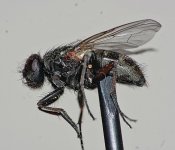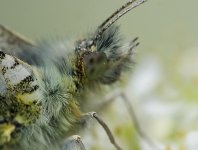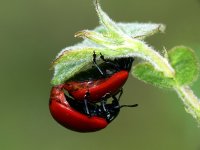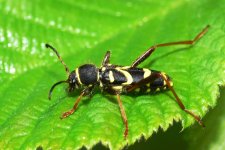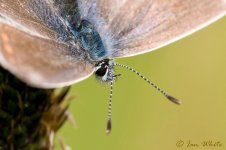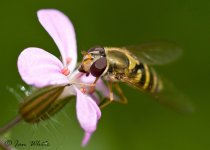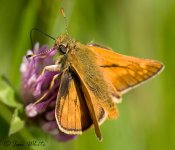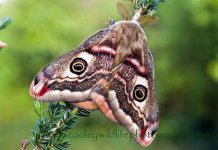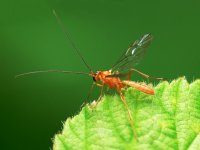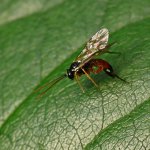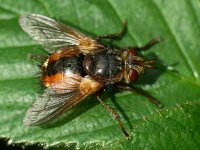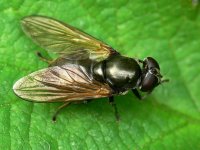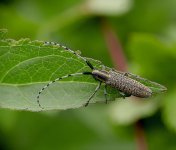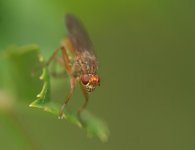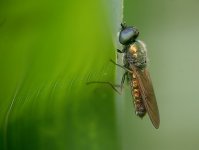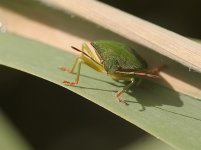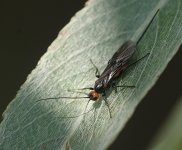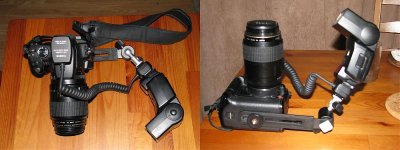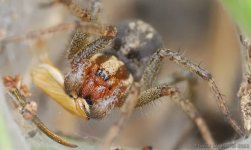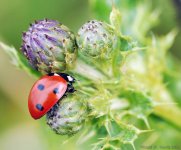Hi all. 1st tryout with a raynox dcr-150 and canon ef-s 55-250 IS
I'm no stranger to 'normal' butterfly and dragon fly 'close up' stuff but this is a whole new ball game for me and a lot of my 'rules gained through experience' no longer seem to apply in this new field of photography.
Appologies for the macabre test subject but I reckon almost everyone 'tries out their macro' using dead flies.
I spent an good hour trying out different camera settings in an attempt to get even a recognisable photo.
Early days yet, with lots more knowledge and experience needed, of course.
I am sure that I haven't even scratched the surface with the basics yet so this is where you guys come in.
Photo taken at 200 ISO, f16, 1/200, using the cameras own pop-up flash compensated down to -1 and with a piece of white kitchen towel as a diffuser.
The most difficult practicality I am facing is focus. Being magnified, even the tinyest movement by myself becomes a blooming earthquake on the shot. How you guys take macro shots 'in the field' is beyond me!
Any obvious, naive errors noticed with my 1st attempt, picked up by you folks will, I'm sure, help me to nip 'em in the bud during my baby years at this game!
Anyway, any tips/advice on a way forward will be very much appreciated.
I suppose that practice,practice, and more practice is the first step?
Focusing rails? Necessary or not? Must make focusing a tad easier?
Ring Flash? Worth the expense?
Thanks guys.
Joe
PS, I've read the excellent thread from Baron Birder re raynox dcr 150 - excellent stuff!
I'm no stranger to 'normal' butterfly and dragon fly 'close up' stuff but this is a whole new ball game for me and a lot of my 'rules gained through experience' no longer seem to apply in this new field of photography.
Appologies for the macabre test subject but I reckon almost everyone 'tries out their macro' using dead flies.
I spent an good hour trying out different camera settings in an attempt to get even a recognisable photo.
Early days yet, with lots more knowledge and experience needed, of course.
I am sure that I haven't even scratched the surface with the basics yet so this is where you guys come in.
Photo taken at 200 ISO, f16, 1/200, using the cameras own pop-up flash compensated down to -1 and with a piece of white kitchen towel as a diffuser.
The most difficult practicality I am facing is focus. Being magnified, even the tinyest movement by myself becomes a blooming earthquake on the shot. How you guys take macro shots 'in the field' is beyond me!
Any obvious, naive errors noticed with my 1st attempt, picked up by you folks will, I'm sure, help me to nip 'em in the bud during my baby years at this game!
Anyway, any tips/advice on a way forward will be very much appreciated.
I suppose that practice,practice, and more practice is the first step?
Focusing rails? Necessary or not? Must make focusing a tad easier?
Ring Flash? Worth the expense?
Thanks guys.
Joe
PS, I've read the excellent thread from Baron Birder re raynox dcr 150 - excellent stuff!
Attachments
Last edited:




